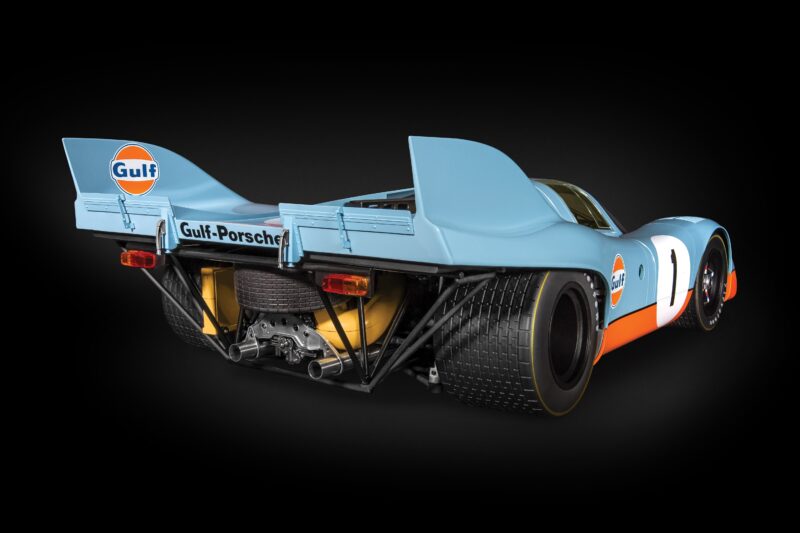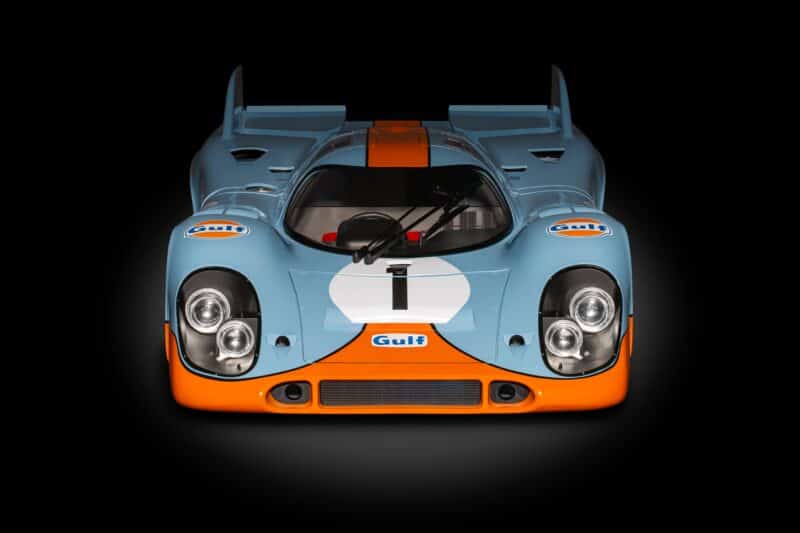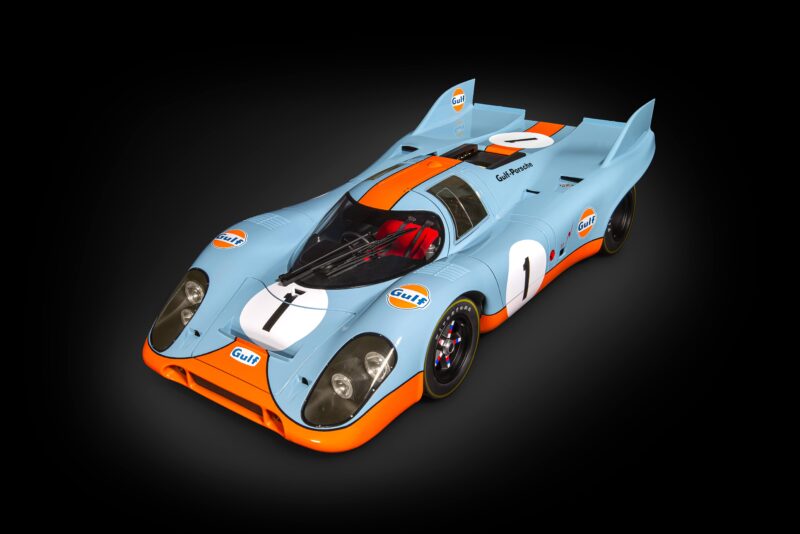Now, however, there’s another option. Later this month, Pocher will trial a new offering to the buyers of its brand new Porsche 917 model: a getaway that removes all day-to-day distractions, leaving you, a room, and a box of (elaborate) bits.
The six-day Pocher Pitstop package is for up to four guests, but for this preview of what guests can expect, I’m on my own in the flat, a stone’s throw away from the Le Mans circuit where the Porsche 917 forged its legend in the 1970s.
Building the engine block — which contains over 50 individual pieces, some less than a centimetre long — is the first hurdle. It takes me 30 minutes to screw two pieces of tiny die-cast metal together and it’s a further four hours before I’ve glued my way through the first three steps — with 31 still to go. My patience finally snapped while trying and failing to glue 24 wires and cables into their respective terminals.
Luckily, Pocher have prepared for the occasional hissy-fit. While pictures of the 917K in its heyday litter the walls of Pocher’s private accommodation, the real thing is housed in the Le Mans Museum, which is a 20-minute walk away. The sight of it — as driven by Steve McQueen in Le Mans the movie — is the perfect way to reignite some dampened inspiration.

Almost every 917 detail is accounted for
Pocher
The 917’s connection with Le Mans is ultimately what the Pocher Pitstop experience is based around — as well as providing modellers with the “perfect place” to assemble a highly detailed model.
“We wanted to do something special for the launch of our latest model and make it a launch to remember,” said Pocher in a statement. “Recent research by our parent company, Hornby Hobbies, showed that building models is not just an enjoyable pastime, but it has some significant benefits for many people too! 65% of people felt modelling benefited their mental health and 7 in 10 people also said they felt it was a mindful activity.
“When we saw this we thought it would be a perfect opportunity to create the ultimate experience for people to unwind, take time for themselves and do something fun at the same time. We also know that the Porsche 917 and Le Mans have a long history together and we thought what better place to host the first Pocher Pitstop than there.”
When I return to the apartment, it looks like the minuscule garage of a failing French motor sport outfit: parts everywhere, tyres in a pile in the corner, a croissant going stale on the windowsill and the shell of what should be a car in the centre of the room.
Motivated to bring my very own 917 to life, I finish wiring the engine and fix on the exhaust system — which thankfully contains just seven parts. Holding the now finished engine block in my hands feels like an almighty achievement in itself. It’s no wonder it took Pocher two years to design and develop the entire model.
The remarkable authenticity of Pocher’s 917 was achieved not only through laser scans of its real-life counterpart, but also through access to vehicle drawings, high-resolution photographs and consultations with Porsche experts. From the gold buckle on the seatbelt to the entire throttle assembly — it’s all here and in intricate detail.


